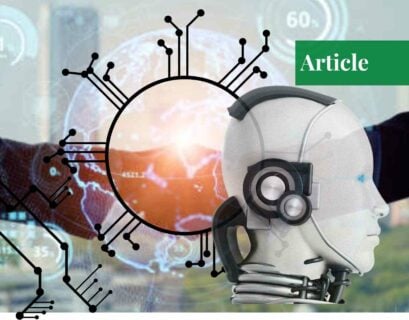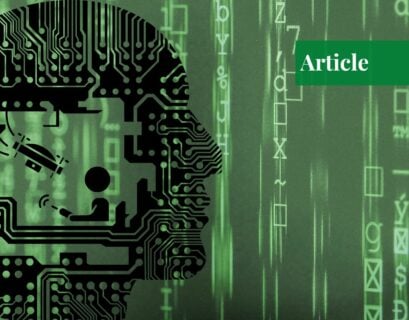Introduction
Artificial intelligence (AI) has rapidly emerged as transformative technology with the potential to revolutionize many sectors of society, including the field of international security. Intelligence gathering and analysis is a crucial component of national and international security, as it helps policymakers and security professionals to anticipate and mitigate potential threats and to make informed decisions in response to crises and conflicts.
In recent years, AI has been increasingly integrated into intelligence-gathering and analysis processes, offering the potential to significantly improve the efficiency, accuracy, and objectivity of these activities. However, the use of AI in intelligence gathering and analysis also raises a number of complex ethical, legal, and security concerns, which must be carefully considered as the technology continues to develop and advance.
Benefits
One of the key advantages of using AI in intelligence gathering and analysis is its ability to significantly increase the speed and efficiency of data processing and analysis. Traditional intelligence gathering and analysis processes are often labor-intensive and time-consuming, requiring analysts to sift through large volumes of data and identify relevant patterns and trends manually. This can be particularly challenging in the fast-paced, high-stakes environment of international security, where the need for timely and accurate information is paramount.
AI, however, is able to process and analyze data at a much faster rate than humans, enabling intelligence analysts to identify patterns and trends that might otherwise be missed. For example, AI-powered analytics tools can be used to analyze large datasets from a variety of sources, such as satellite imagery, social media, or cybersecurity logs, and identify patterns and trends that are indicative of potential threats. This can help intelligence analysts to identify potential threats more quickly and accurately, and prioritize their efforts accordingly.
Another potential benefit of using AI in intelligence gathering and analysis is its ability to enhance the accuracy and objectivity of analysis. Human analysts are subject to a range of cognitive biases that can distort their perceptions and judgment, such as confirmation bias, which leads individuals to seek out and interpret information in ways that confirm their preexisting beliefs and assumptions.
AI is not subject to these biases and is able to process and analyze data in a more objective and unbiased manner. This can help to reduce the risk of errors or omissions in intelligence analysis and ensures that decision-makers have access to accurate and reliable information.
Finally, AI has the potential to handle large volumes of data and to detect patterns that may be missed by human analysts. As the amount of data available to intelligence analysts continues to grow, it becomes increasingly challenging for humans to process and analyze this information in a timely and accurate manner.
AI, on the other hand, is able to handle large volumes of data and identify patterns and trends that may be too complex or subtle for humans to detect. This can help intelligence analysts to identify potential threats and opportunities that might otherwise be missed, and make more informed decisions in response.
Challenges
One of the main ethical concerns surrounding the use of AI in intelligence gathering and analysis is the potential for the technology to be biased or to infringe on privacy rights. AI algorithms are trained on data sets that reflect the biases and prejudices of the humans who create them, and this can lead to biased or unfair outcomes if not properly addressed. For example, AI algorithms used to analyze social media data for intelligence purposes may be biased against certain groups or individuals, leading to inaccurate or discriminatory conclusions.
Similarly, the use of AI to monitor and analyze the online activity of individuals may raise privacy concerns, particularly if it is done without the knowledge or consent of those individuals. Another challenge of using AI in intelligence gathering and analysis is the potential for the technology to be hacked or used by hostile actors.
AI algorithms are vulnerable to cyber attacks, and the use of AI in sensitive intelligence gathering and analysis processes may create new vulnerabilities that could be exploited by hackers or other hostile actors. Additionally, AI algorithms can be used by hostile actors to spread disinformation, manipulate public opinion, or disrupt critical infrastructure.
Moreover, there are challenges in integrating AI with existing intelligence systems and processes. AI algorithms often require significant amounts of data and computing power to operate, which may be beyond the capabilities of many intelligence agencies. AI algorithms may also require frequent updates and adjustments to maintain their accuracy and effectiveness, which can be time-consuming and resource-intensive.
Finally, there may be resistance to the adoption of AI within the intelligence community, as some analysts may be concerned about the potential impact on their jobs or the integrity of the intelligence gathering and analysis process.
Case Studies of AI in Intelligence Gathering and Analysis
To illustrate the potential benefits and challenges of using AI in intelligence gathering and analysis, we will now consider a few case studies of how the technology has been used in practice.
Example 1: Analyzing Satellite Imagery
One of the most widely used applications of AI in intelligence gathering and analysis is the analysis of satellite imagery. Satellite imagery has long been a key source of intelligence for military and intelligence agencies, providing a bird’s-eye view of military installations, transportation networks, and other strategic assets. However, the process of analyzing satellite imagery is time-consuming and labor-intensive, requiring analysts to manually review large volumes of images and identify relevant patterns and trends.
AI algorithms, on the other hand, are able to analyze satellite imagery much more quickly and accurately than humans. For example, AI algorithms can be trained to identify specific types of objects or structures, such as military bases or missile launch sites, and to flag them for further analysis. An example of the use of AI in analyzing satellite imagery is the use of machine learning algorithms to analyze images of the Korean Peninsula for the US military. These algorithms were able to identify changes in the North Korean military infrastructure, such as the construction of new missile launch sites, and to provide timely and accurate intelligence to policymakers.
Example 2: Analyzing Social Media Data
Another common application of AI in intelligence gathering and analysis is the analysis of social media data. Social media platforms, such as Twitter, Facebook, and Instagram, generate vast amounts of data that can be used to track the activities and opinions of individuals, groups, and organizations. This data can be particularly valuable for intelligence agencies, as it can provide insights into the intentions and motivations of potential adversaries, as well as help to identify emerging threats and opportunities.
AI algorithms can be used to analyze social media data in a variety of ways, including tracking the spread of specific hashtags or keywords, analyzing the sentiment of posts, and identifying patterns and trends in user behavior. One example of the use of AI in analyzing social media data is the use of machine learning algorithms by the US military to track the activities of ISIS and other terrorist groups on social media platforms.
Example 3: Analyzing Text and Speech
AI is also being used to analyze text and speech for intelligence purposes. Natural language processing (NLP) algorithms can be used to analyze large volumes of text, such as transcripts of conversations or documents, and to identify patterns and trends that are indicative of potential threats. For example, AI algorithms can be used to identify specific accents or dialects, or to identify individuals based on their voice patterns. This can be particularly useful for intelligence agencies that are trying to identify individuals who may be trying to conceal their identities or locations.
Example 4: Analyzing Financial Data
AI algorithms can be used to analyze financial data, such as bank transactions or stock trades, and to identify patterns and trends that are indicative of potential threats. One example of the use of AI in analyzing financial data is the use of machine learning algorithms by the US Treasury Department to identify patterns of activity that are indicative of money laundering or terrorist financing.
Conclusion
In the future, it is likely that AI will become increasingly integrated into intelligence gathering and analysis processes, and will be used to augment the work of human analysts rather than replace them. This could significantly improve the efficiency and effectiveness of these activities, and allow analysts to focus on more complex and strategic tasks.
However, it is also likely that the increasing use of AI in intelligence gathering and analysis will have significant implications for the intelligence community and international security, including the potential automation of some intelligence jobs and the potential impact on the balance of power in international relations.
To address these challenges and maximize the potential of AI in intelligence gathering and analysis, it is important that intelligence agencies and policymakers develop strategies to address the ethical, legal, and security concerns raised by the technology. This may involve the development of international norms and agreements to regulate the use of AI in this field, or the establishment of oversight mechanisms to ensure that the technology is used ethically and responsibly.
By proactively addressing these challenges, it may be possible to harness the full potential of AI in intelligence gathering and analysis, and to enhance the effectiveness of international security efforts.
If you want to submit your articles and/or research papers, please check the Submissions page.
The views and opinions expressed in this article/paper are the author’s own and do not necessarily reflect the editorial position of Paradigm Shift.



















